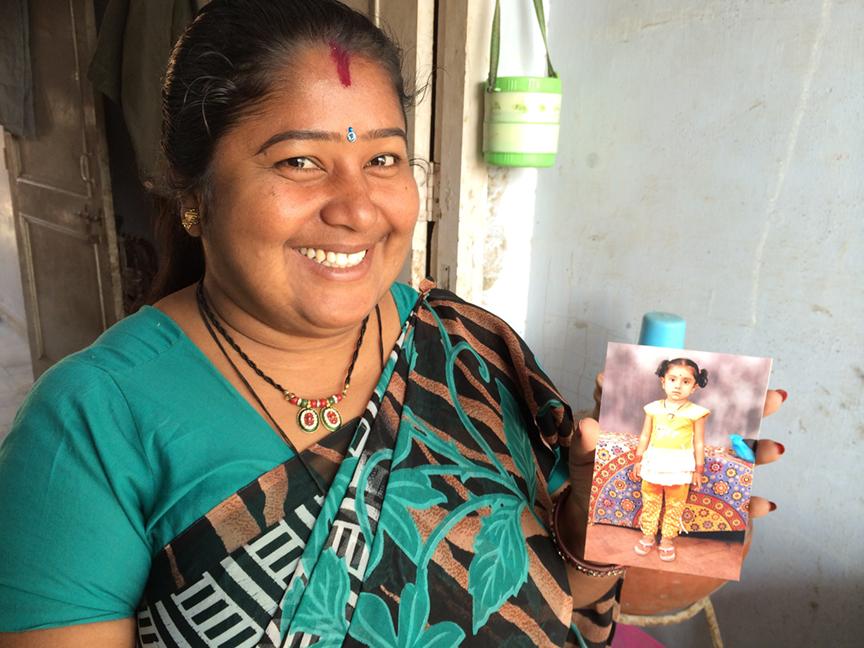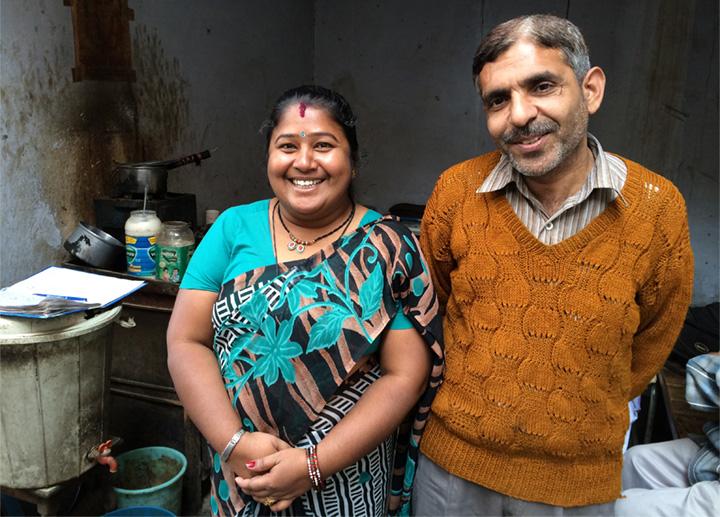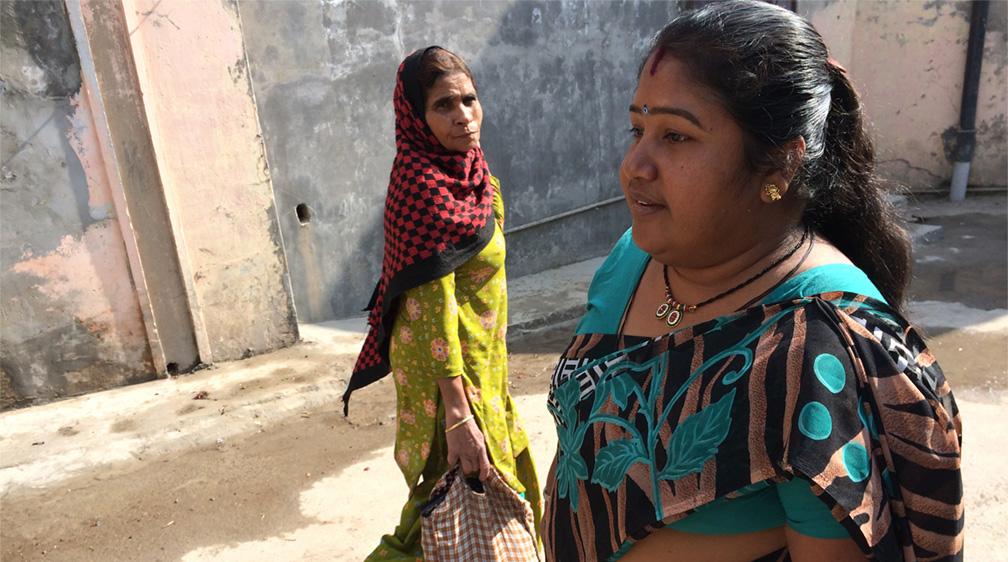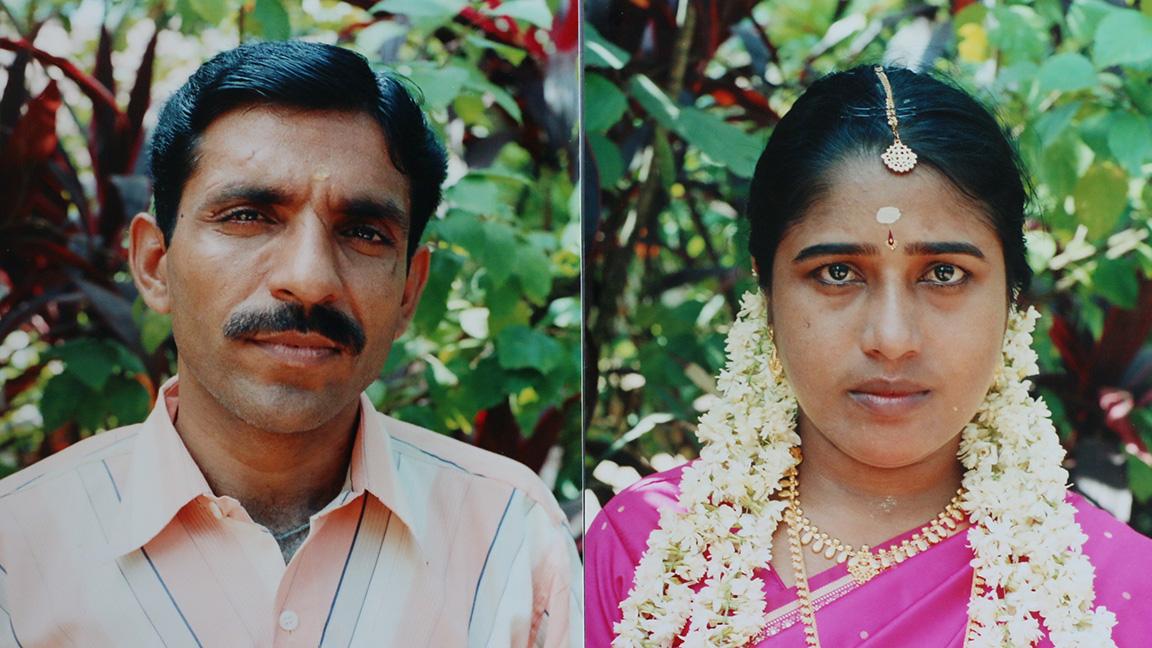It took a bride shortage for some northern India communities to realize the value of girls
Manish and Priya Kumar on their wedding day ten years ago. They got married in Kerala, India, and then took the three-day train journey north to Manish's hometown in Haryana.
In India, there are towns and villages with a drastically higher number of men compared to women. The northern state of Haryana has the worst gender ratio in the country: 879 women for every 1000 men.
That’s because of the illegal — but still practiced — sex-selective abortion of female fetuses. In Haryana, many families see daughters as a burden, especially economically. They often have to pay a dowry, sometimes thousands of dollars in gifts, to the son-in-law’s family. Demanding a dowry is now illegal in India, but still a strong tradition.

When sonograms became available here in the 1970s, some families opted to use that technology to selectively abort female fetuses. The resulting shortage of females really started to be felt a couple decades later. In short, there aren’t enough women in Haryana for men of age to marry. So matchmakers have been setting up marriages with brides from other parts of the country. In an intriguing twist, some of these brides have come from Kerala, a much more progressive state far to the south.
Almost eight years ago, I read a Times of India newspaper article about brides who left their hometowns in Kerala to marry men 2,000 miles north in Haryana.
They had voluntarily agreed to these marriages because they were unable to find grooms locally, mostly because of an unlucky horoscope or their family’s inability to afford a wedding. I made a documentary film about three women from Kerala who had moved to one of India’s most patriarchal regions. And last year, I returned to Haryana to meet them again, seven years later.
An unlikely pairing
Priya Kumar lives on the top floor of a building full of shops in the small Haryana town of Hansi, about 100 miles northwest of Delhi. As soon as I arrive at her home, she instantly recognizes me and greets me with a big hug. She tells me she’s kept all the photos I took of her years ago.
I first met her when filming the documentary, and she had introduced me to some of the women featured in my film. Priya’s husband Manish works at a tea stall nearby.

They make me a cup of tea before sitting down to talk about the circumstances of their marriage.
“I got married in Kerala because I wasn’t getting a match here,” Manish says. “That’s why I had to go there. The rest was written in my destiny.”
“I didn’t get any proposals in Kerala,” Priya says. “If I did, I might have stayed. Some people said my family wasn’t good or I was fat — they say those kind of things there.”
A local Haryana man who had married a bride from Kerala found a way to exchange pictures between the two.
“The boy looked good in the photo,” Priya recalls. “When I saw him in person, he looked good too.”
After the wedding, Priya took a three-day train journey, her first, from the lush, green fields of rural Kerala to begin a new life in the dusty, crowded towns of Haryana. Manish and Priya’s worlds couldn’t be more different. Kerala has the highest literacy rate in the country, and most women get an education there. Haryana has a deeply patriarchal culture, and women often don’t leave their homes or villages unless they’re with a male relative.
“In the beginning, I was really upset,” Priya says. “When someone is new here, it’s a given [that] they’ll be upset. There’s a problem with the language, difficulties with the food.” To make matters worse, Priya didn’t know Hindi, the predominant language in Haryana. “I started learning slowly, slowly. In five to six months, I learned Hindi completely,” she says, laughing.

A network of brides
This trend of Kerala-Haryana marriages was in full swing seven years ago when I first visited. The number of such couples swelled to more than 200 in this small town and nearby villages. Priya has a network of friends from Kerala here, and she often spends time with them, talking and sharing stories in their native Malayalam language.
Today, her friend Pushpa has come over to socialize for a few hours. The friends say these Kerala marriages came to a halt a few years ago. Some brides even returned home permanently because of marital issues, including alcoholic husbands or controlling in-laws. But I found that the women who stayed here have slowly transformed their communities.
Daughters in a region full of boys
The Kerala brides brought with them values that put daughters on equal footing with sons. In Kerala, sex-selective abortion is practically unheard of. The imported wives aren’t pressured into them here, either, because their in-laws worry they could leave if they’re unhappy. The women return to Kerala to give birth, and come back to Haryana when their babies are a few months old. Both Priya and her friend have one daughter each.
“My husband was so delighted when our daughter was born,” Priya says. “He distributed sweets to everyone in the neighborhood. There’s really no difference for us to have a girl.”
“My mother and father think the same,” I tell her.
“All mothers and fathers should think this,” Priya says, with a cheerful laugh. “They should all have a girl. She is the most valuable. I explain my message to others and tell them there’s no difference. A girl brings honor to the family."
Because their daughter Kartika is staying with her grandmother in Kerala right now, I ask Priya and Manish to see some photos of her. They pull out a heavy album and flip through the pages of colorful photos.
“Here’s our little girl,” Manish says. “We celebrated her birthday and called all our friends over.”
I ask Manish what he thinks about having an only daughter.
“Everyone has their own way of thinking,” he says. “For us, our daughter is like an image of god.”
